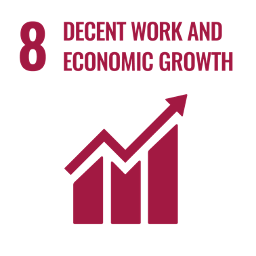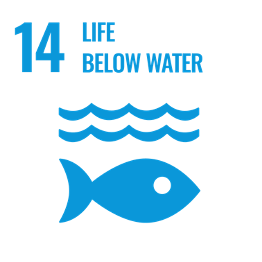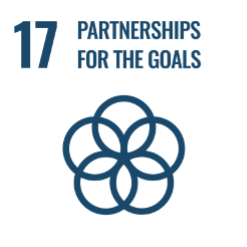MENU
Starting a Business
- Best Small Business Loans
- Best Business Internet Service
- Best Online Payroll Service
- Best Business Phone Systems
Our Top Picks
- OnPay Payroll Review
- ADP Payroll Review
- Ooma Office Review
- RingCentral Review
Our In-Depth Reviews
Finance
- Best Accounting Software
- Best Merchant Services Providers
- Best Credit Card Processors
- Best Mobile Credit Card Processors
Our Top Picks
- Clover Review
- Merchant One Review
- QuickBooks Online Review
- Xero Accounting Review
Our In-Depth Reviews
- Accounting
- Finances
- Financial Solutions
- Funding
Explore More
Human Resources
- Best Human Resources Outsourcing Services
- Best Time and Attendance Software
- Best PEO Services
- Best Business Employee Retirement Plans
Our Top Picks
- Bambee Review
- Rippling HR Software Review
- TriNet Review
- Gusto Payroll Review
Our In-Depth Reviews
- Employees
- HR Solutions
- Hiring
- Managing
Explore More
Marketing and Sales
- Best Text Message Marketing Services
- Best CRM Software
- Best Email Marketing Services
- Best Website Builders
Our Top Picks
- Textedly Review
- Salesforce Review
- EZ Texting Review
- Textline Review
Our In-Depth Reviews
Technology
- Best GPS Fleet Management Software
- Best POS Systems
- Best Employee Monitoring Software
- Best Document Management Software
Our Top Picks
- Verizon Connect Fleet GPS Review
- Zoom Review
- Samsara Review
- Zoho CRM Review
Our In-Depth Reviews
Business Basics
- 4 Simple Steps to Valuing Your Small Business
- How to Write a Business Growth Plan
- 12 Business Skills You Need to Master
- How to Start a One-Person Business
Our Top Picks
The UN’s Sustainable Development Goals for Small Businesses

Table of Contents
In 2015, the United Nations (U.N.) adopted a set of 17 Sustainable Development Goals (SDG) to end poverty, protect the planet and ensure prosperity. This endeavor was part of a sustainable development agenda with a goal end date of 2030. Unfortunately, the U.N.’s Sustainable Development report for 2023 showed slow progress on half the goals and no progress or regression in 30 percent. Clearly, more needs to be done.
While it is common among large corporations to report on their contribution to the SDGs, the goals are less well known among small and medium-sized businesses. While small and medium-sized enterprises (SMEs) often can’t approach the goals in the same manner as large corporations or governments, they can still make an impact. After all, there are over 400 million small businesses on the planet and they are responsible for half of the world’s employment.
We’ll take a deeper look at the U.N.’s SDGs, explain why your SME should care about them and share tips for working toward achieving them.
Working toward a sustainable business model brings numerous benefits, including helping the planet and its creatures and improving how customers see you.
The UN’s sustainable development goals
These goals were created to make the world a better place socially, morally, economically, politically and physically. Some goals may be more relevant to specific industries than others. Businesses can approach these goals in various ways ― any step toward sustainability is a step in the right direction.
1. End poverty
- Set and enforce strict nondiscriminatory policies.
- Recruit, train and employ local community members, including those living in poverty, and integrate them into your value chain.
Identify and prevent conscious and unconscious bias in the workplace by educating your team and adopting unbiased recruitment technology and strategies.
2. Zero hunger
- Support and encourage small-scale farming and practice farm-to-table or “farm-to-office” snacks, sourced from local entities whenever possible.
- Demonstrate transparency in the agricultural supply chain.

3. Good health and well-being
- Offer employee health benefits.
- Make investments in health a priority in business operations.

4. Quality education
- Create programs, such as internships, work-study programs and traineeships, that give students earlier access to the corporate environment.
- Provide employees with continuous opportunities to improve their (job) skills for their current and future employment.
You can make a profit and still be socially responsible. Customers will see and appreciate your actions and high-quality employees will be drawn to your organization.
5. Gender equality
- Pay equal remuneration, including benefits, for work of equal value.
- Support access to child and dependent care by providing services, resources and information to both women and men.
- Establish a zero-tolerance policy toward all forms of violence at work, including verbal and physical abuse.

6. Clean water and sanitation
- Prioritize water efficiency by installing best-practice technologies for water conservation.
- Educate employees about the importance of water efficiency.
- Prohibit the use of chemicals and materials that can be particularly detrimental to water quality if improperly disposed of.

7. Affordable and clean energy
- Pursue efficient certifications, such as LEED or Energy Star.
- Prioritize energy conservation and energy efficiency practices across all operations; preserve light, heating, cooling, and more whenever possible.

8. Decent work and economic growth
- Offer apprenticeship opportunities.
- Foster an entrepreneurial culture and invest in and mentor young entrepreneurs.
- Install a firm policy against unfair hiring and recruitment practices, such as gender bias.

9. Industry, innovation and infrastructure
- Establish standards and promote regulation that ensures company projects and initiatives are managed sustainably.
- Promote innovation by giving all stakeholders the opportunity to offer creative solutions to sustainability challenges.

10. Reduced inequalities
- Invest in business-driven poverty eradication activities, such as developing a living wage policy.
- Partner with civil society networks to provide education and entrepreneurial skills training.

11. Sustainable cities and communities
- Jointly develop and participate in a sustainable community that brings together relevant stakeholders through a common and neutral platform to jointly analyze, discuss and act on urban functionality, resilience and sustainable development.
- Support and utilize public transportation services.

12. Responsible consumption and production
- Reduce manufacturing impacts by substituting virgin raw materials in products with post-consumer materials through recycling and upcycling.
- Reduce waste significantly and ensure that any unavoidable waste is utilized to the fullest degree, such as organic waste as fuel or fertilizer.
Reducing your business’s carbon footprint can attract investors. According to a Harvard survey, over 75 percent of respondents said at least some element of sustainability is essential when considering a potential investment.
13. Climate action
- Retrofit the lighting systems of the company’s facilities to energy-efficient LED lighting.
- Understand climate risk and build resilience into the company’s assets and supply chain.
- Expand sustainable forest management through responsible sourcing practices and product substitution.

14. Life below water
- Track the life cycle of products and materials to understand how they are disposed of and which products could likely find their way into marine environments.
- Record and disclose information on the chemical and material usage within products, packaging and processing systems to facilitate closing the loop.
- Prevent waste mismanagement or littering that could pollute the marine environment.
Commit to eco-friendly packaging to ensure your business doesn’t send harmful materials into the environment.
15. Life on land
- Measure, manage and mitigate impacts on ecosystems and natural resources.
- Scale up best practices for land-use planning and management.
- Commit to and implement responsible sourcing practices beyond compliance ― applying environmental and social safeguards ― for all raw materials and commodities.
Reduce resource burn in your organization by identifying wasteful processes and practices in your business and working to eliminate them.
16. Peace, justice and strong institutions
- Comply with laws and seek to meet international standards; require and support business partners to do the same.

17. Partnerships for the goals
- Partake in SDG-related partnerships like the U.N.’s Make the Global Goals Local campaign, the SDG reporting initiative and locally based sustainability initiatives.
Why businesses should care about the UN’s sustainable development goals
Tracy Triggs-Matthews, associate director of the University of North Carolina’s Kenan-Flagler Business School’s Ackerman Center for Sustainable Enterprise, believes many companies are on the right track. “I think many SMEs would be surprised to see how ‘good’ their company already is and how small tweaks can make them even better,” Triggs-Matthews explained. “Consumers are looking for brands that are making a big difference and being able to tell that story will only help differentiate an SME among competitors.”
Although some incentives to embrace the goals lie in the realm of contributing to the greater good and a better future, there are countless potential benefits for small businesses to consider.
“I think the way for businesses to look at the U.N.’s sustainable development goals is through the lens of business opportunity,” advised Tensie Whelan, director of New York University’s Stern Center for Sustainable Business.
According to the Marigold United States Consumer Trends Index 2023, 16 percent of U.S. consumers say their main motivation when it comes to purchasing is that brands behave responsibly. This attitude is even more pronounced among the millennial generation (20 percent) and is becoming steadily more prevalent, growing by 14 percent year-over-year.
In addition, working toward the goals results in happier and more productive employees with lower employee turnover and absenteeism. It can also lower energy costs, create goodwill in the community and generate positive public relations for your company.
Instill transparency in your business when discussing your actions and accomplishments. Being less than honest and “greenwashing” your efforts can backfire.
Tips for working toward the UN’s sustainable development goals
Regardless of size or industry, all companies can contribute to the SDGs. Remember, the “global goals” are intended for all tiers of business and each company will approach them differently, according to their operations.
Here are some guidelines for working toward the U.N.’s SDGs:
- Do business responsibly: Conduct business responsibly and pursue opportunities to solve societal challenges through business innovation and collaboration.
- Be transparent about your efforts: Staying transparent with consumers is crucial. For example, one T-shirt production company in North Carolina, TS Designs, strives to make its supply chain as transparent as possible. Company president Eric Henry said that sustainability is not limited to a product or a business ― it’s the whole picture. For anyone curious about the company’s business operations, TS Designs offers monthly tours of the facilities to ensure transparency. “We continue to reduce our footprint and hope that it will inspire others to do the same,” Henry noted.
- Check off goals you’ve already accomplished: Triggs-Matthews suggests that an SME should create a tiered system with three lists: the goals they’ve already positively addressed, goals that could be easily accomplished and goals that would take time and money to accomplish.
- Set aside goals outside your area: Cross off goals in areas in which you have little involvement or impact. For example, your business may have nothing to do with agriculture, so you can cross off the “zero hunger” goal for now. Likewise, most SMEs will have little involvement in creating sustainable cities.
- Focus on achievable goals: Focus on achievable goals that relate to your business. Prioritize the goals that are the most important to you as a business and for which you can make the most difference.
- Create policies and initiatives: Look at the achievable goals you’ve defined and create policies and initiatives to address the problem. For example, for the “end poverty” goal, consider hiring people who didn’t go to college but who have relevant work experience. You can also support community nonprofits that address specific goals by donating money or organizing employee participation in 5Ks and other fundraising events.
- Communicate your actions: Communicate your actions to customers, employees and other stakeholders. It’s OK to toot your own horn. Let your customers and prospective customers know what you’ve accomplished toward each goal. Communicating this information with your employees and vendor network can create goodwill, cohesion and customer loyalty.
Go through this exercise at least every three years. Your business practices may change and you want to keep making progress toward making the world a better place.
Carlyann Edwards contributed to this article. Source interviews were conducted for a previous version of this article.





















